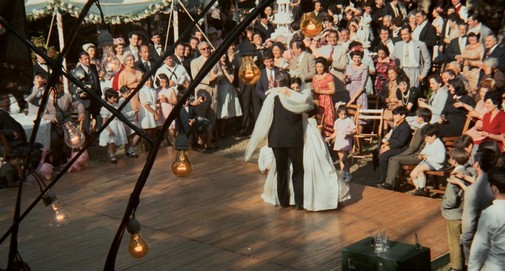The next episode of our series, ‘Hit Me With Your Best Shot,’ arrives tomorrow night. It’s focused on The Godfather on the occasion of its new restoration. You still have time to participate. For now, as something of a preview, here’s Cláudio’s entry.
The Godfather is one of those canonized classics about which there is nothing new to say. Its themes and visual strategies have been overanalyzed ad nauseam across decades, from Coppola's Viscontian staging to Gordon Willis's shadowy cinematography. Choosing the best shot from such masterpiece and justifying that choice is thus a complicated exercise where one risks obsolescence, repetition, utter failure. Indeed, of this season's best shot challenges, this was the hardest...
After narrowing it down to ten finalists, it became a game of picking which of the flick's themes feels more important today, which formal gesture strikes me as most characteristic of The Godfather as a whole. It's another way of saying that you'll likely get a different answer if you ask me what's the picture's best single shot on another day. So today, my pick is this emphatically symbolic image, which could stand for the entire Godfather trilogy and not just the movie that started it all.
First of all, this is a superb composition, made for the big screen in its focus on tiny details best viewed when projected giant. Second, Coppola makes a quiet murder look both epic and cold, deeply unglamorous even when laden with overarching meanings. Here, he pictures the American Dream as a murder on the back of Lady Liberty, a distant ideal that's the background for detached violence. For all the accusations the film has endured about how it idolizes the gangsters within the story, The Godfather paints their world as either sepulchral or banal.
The same goes for the acts of killing presented throughout. Mostly, they're calculated and presented dispassionately, with careful compositions that reveal a clinical purview of carnage. When they go for pulpier registers, they bypass coolness to fall into disgusting mess. To take another life is never an honorable act and none of these people are heroes or villains. They're humans in all their horrible humanity, inflamed by a false sense of purpose, motivated by empty values and bestial impulses. To me, this shot encompasses all of it.

What's more, the image also serves as an example of this restoration's effects on The Godfather's well-known visuals. Both color and light are brighter this time around, while the blacks maintain their sludgy depth and gain more detail. Gone are the sickly sepias of the first Coppola restoration. The sky over Manhattan is no longer a jaundiced ceiling but as blue as it should be. Somehow, the new saturation makes the murder scene feel even more sinister.

